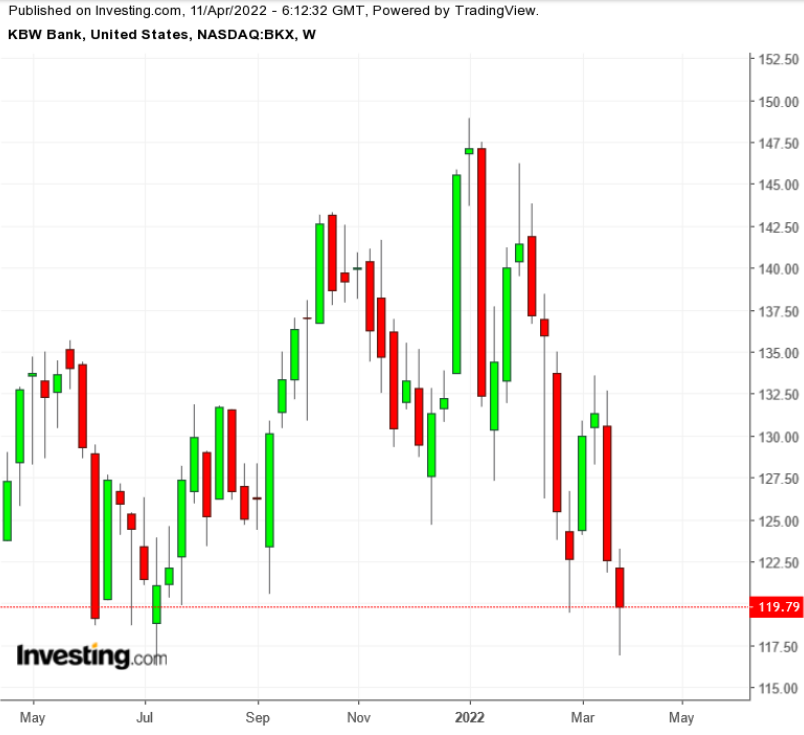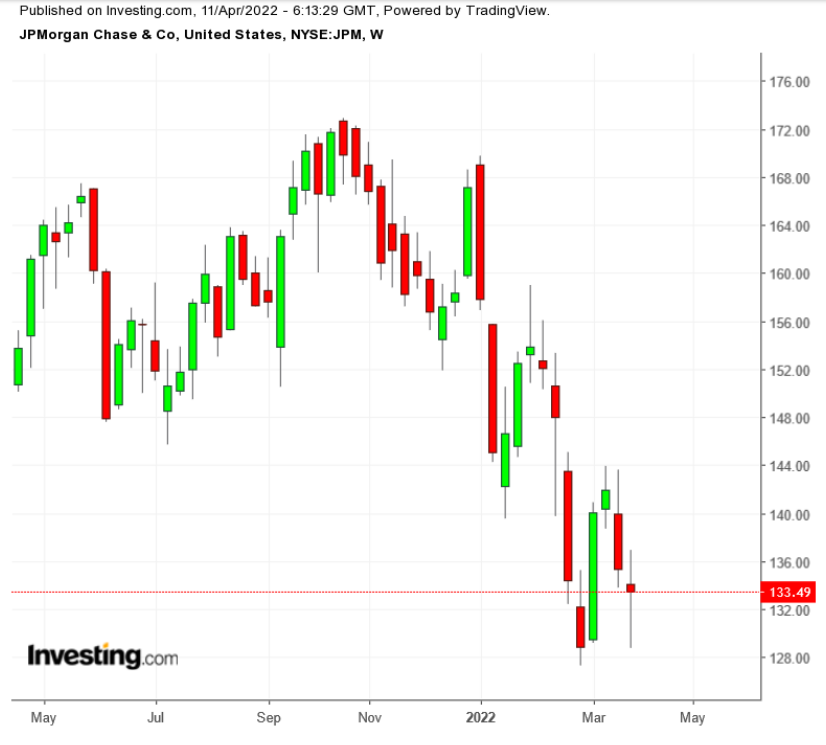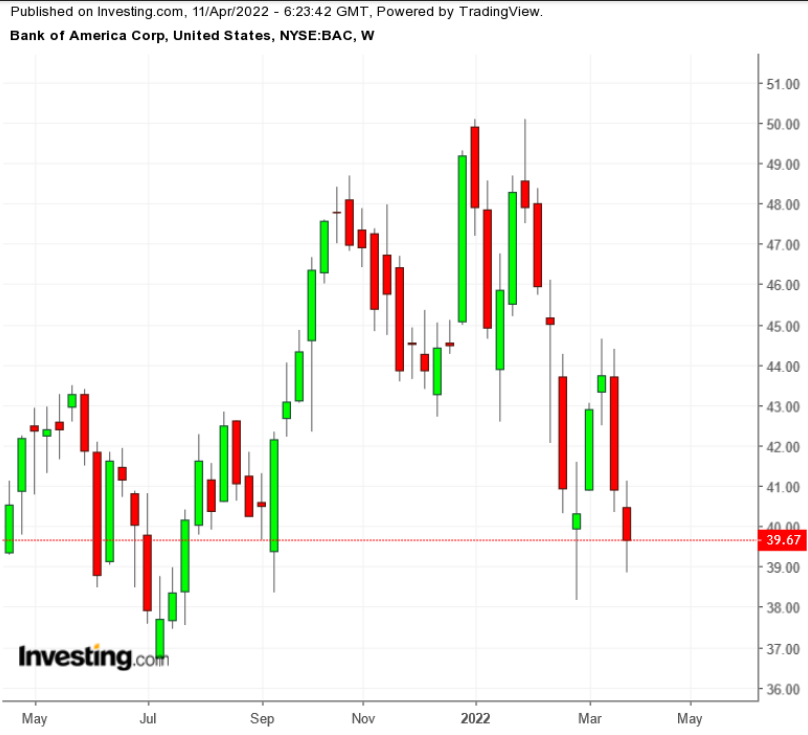Deckers Outdoor earnings beat by $0.24, revenue topped estimates
- Rally in banking stocks has lost its momentum this year amid growth concerns
- Lenders are also facing cost pressures which are hurting their margins
- Despite these risks, some analysts see value in some top banking stocks, advising clients to buy on the dip
Earnings from some of the largest US banks, including JPMorgan Chase (NYSE:JPM), Goldman Sachs (NYSE:GS), and Citigroup (NYSE:C), may show that rising cost pressures are hurting the margins of these multinational financial institutions despite the boost from higher interest rates.
Investors have been selling bank stocks amid signs that the Wall Street financial powerhouses that have driven revenue to record highs have started to cool off. The benchmark KBW Bank Index, which tracks 24 of the largest US lenders, has shed more than 18% since peaking on Jan. 12.

During the same period, the S&P 500 Index has performed much better, falling about 5%.
This underperformance comes after a powerful rally in 2021 when the KBW Bank Index delivered a 35% surge as investors bet that the Federal Reserve’s drive to hike interest rates would benefit lenders' bottom lines.
But that rally has lost its momentum this year as concerns escalate regarding the Fed’s aggressive monetary tightening to fight inflation—now at 40 years high—could push the economy into a recession, reducing demand for credit and other financial services.
In addition, fourth quarter earnings in January also failed to deliver on high expectations as many banks warned that expenses will continue to climb this year, hurting margins. JPMorgan, whose stock is down more than 20% since Jan. 12, told investors in January that expenses in Q4 rose 11% from a year earlier. The largest US lender, which reports Wednesday before the market open, expects spending to rise 8.6% in the first quarter.

Citing inflation and the amount JPMorgan plans to spend on investments, executives told investors that the bank is "in for a couple of years of sub-target returns."
Loan Growth Coming Back
Goldman Sachs, which reports Q1 earnings on Thursday, spent an additional $4.4 billion in compensation last year, sending the bank to its only quarterly profit decline of the year. Citigroup also spent more on compensation in the year's final quarter, causing a 26% decline in profit.
Banks increased salaries for junior bankers across Wall Street in 2021, and firms are also paying up to retain senior executives.
Despite the latest sell-off, we don't think banks will be a dead investment for investors in 2022. Loan growth, though facing some headwinds from geopolitical uncertainty and higher inflation, is rebounding and could accelerate if the economic momentum and job gains remain strong.
Borrowing at the 25 biggest US firms rose for seven consecutive weeks, with loans 5.8% higher as of mid-March than they were a year earlier, according to Federal Reserve data.
Borrowing accelerated at the end of 2021, and this trend could continue as consumers spend their stimulus cash.
Companies, struggling to maintain cash flows amid supply chain bottlenecks and labor shortages, will also increase borrowing to boost inventory. For these reasons, some analysts are advising investors to take advantage of the share price weakness in some top banking stocks.

Bank of America (NYSE:BAC) said in a note to clients last week that it sees a “unique” backdrop heading into JPMorgan’s earnings later this month. Its note adds:
“Stock has historically traded poorly on the back of earnings announcements, but we see the current backdrop as unique in terms of investor sentiment, the significant shift in rate outlook and the potential for better than feared update on customer behavior.”
Analysts at Wells Fargo, in a recent note, picked Bank of America as their favorite stock, saying the financial firm can manage headcount and expenses while earning more from loans.
Bottom Line
The upcoming earnings season for banks could turn out to be a mixed bag for investors as these lenders struggle to contain costs in an inflationary environment. Overall, however, the environment remains supportive for banks, especially when the Fed is expected to hike rates aggressively. In addition, there are signs that companies and consumers are ready to start borrowing again.
